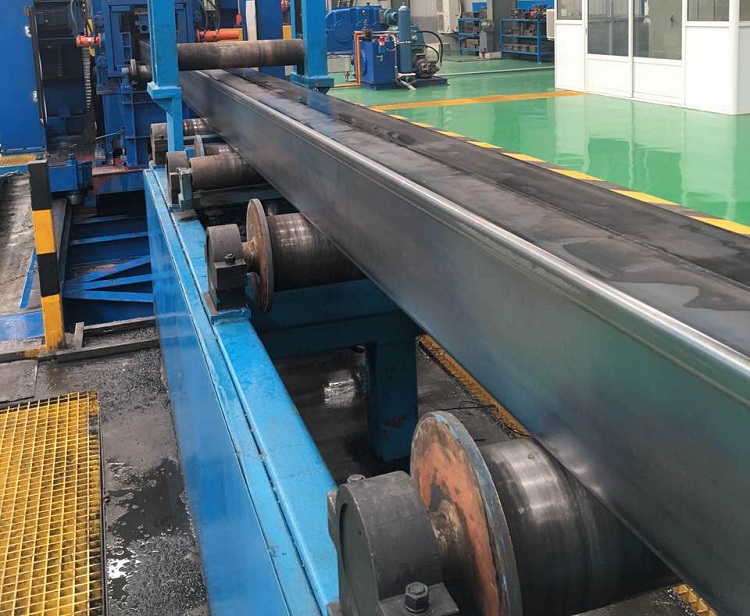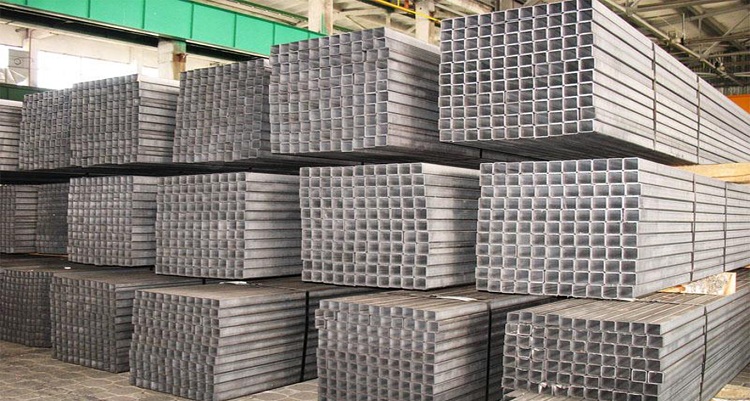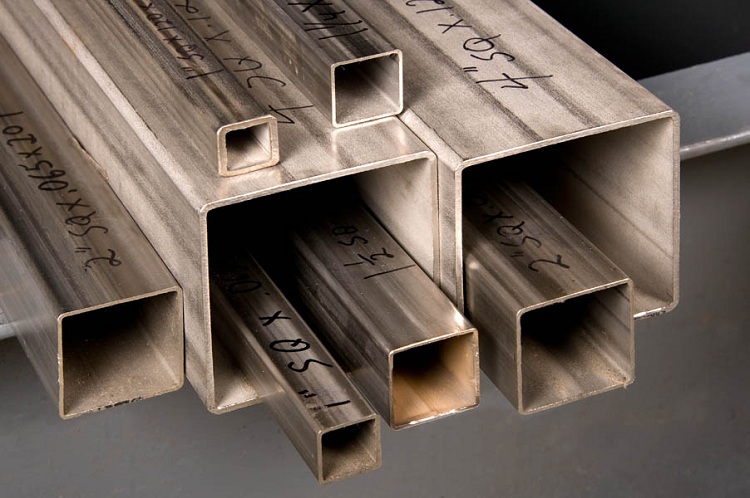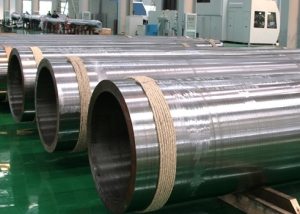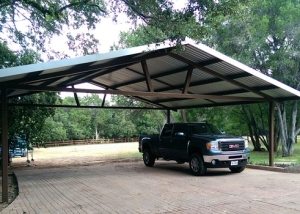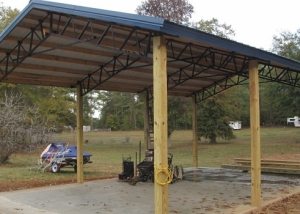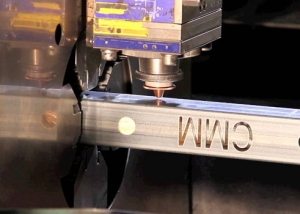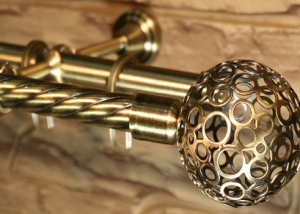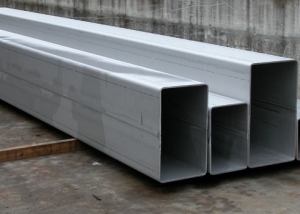Profile pipes is a type of metal rolling, which differs in a non-standard section shape. Today, there are several ways to obtain professional pipes, each of which affects the technical characteristics of the product. Among the main parameters of metal profiled pipes there are: section dimensions, wall thickness and length of the part.

Profile pipes are available in a wide range, they differ in material and method of manufacture, shape and size
Content
Operational areas and benefits of professional pipes
The operational accessory of the above products is quite extensive, however, the most common option for their use is the installation of various frame structures. This is due to the technical characteristics of the pipes, among which stands out the strength, which is necessary in the construction of frame structures. Profiled pipes are used when installing fences using corrugated board (profiled sheet), various fences, as well as decorative elements.
Thus, the use of professional pipes allows not only to complete the construction of the necessary strength, but also to reduce the overall financial costs during construction. However, such savings are possible only if the manufacturer strictly controls the size of the pipe. They must comply with the standards that are prescribed in GOST.
Consider the main advantages of profiled pipes:
- such products are resistant to high loads;
- the relative cheapness of these products, which is determined by the amount of material used for their production;
- a light weight;
- resistance to mechanical stress.
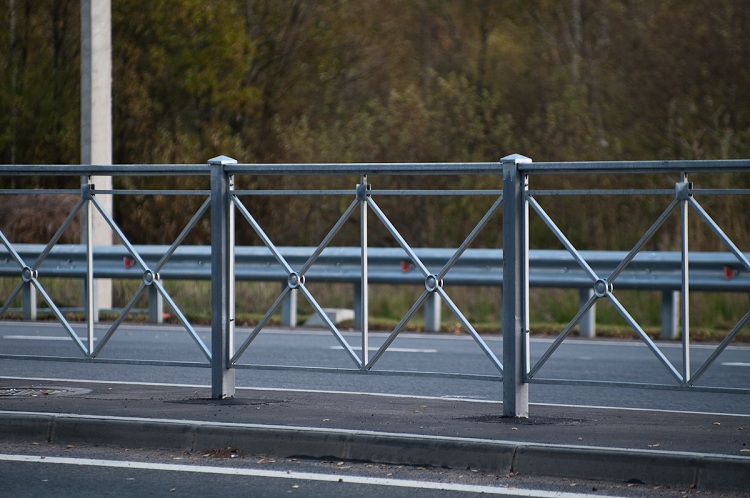
Profile pipes can serve as the basis for a variety of designs, but you need to choose the right section size so that the structure is reliable
The most common material in the manufacture of these products is steel. Steel pipes are distinguished by the fact that they have the highest coefficient of strength.
Why is it necessary to control the size of profile pipes?
The answer to this question is quite simple: strict control of the dimensional characteristics of this product is necessary, because any inaccuracy in dimensions affects the reliability of metal structures constructed from professional pipes. If there is a mistake in calculating the dimensions, two main problems are possible:
- reduction in the strength of the frame structure;
- increase in the mass of the frame structure.
Therefore, the dimensions of the profile pipe must comply with state standards. If the overall dimensions do not meet the standards set forth in GOST, the structure of such products will not have sufficient strength, which can lead to its destruction.
Note! GOST regulates not only the overall dimensions of this product, but also the range of permitted deviations.
It is worth noting one important detail - if the profile pipe has non-standard dimensions, then the calculation of these products is carried out according to individual formulas. Standard pipes can be calculated using the corresponding GOST. Thus, the dimensions of the shaped metal rolling determine the very possibility of the existence of a frame structure.
Types of profile pipes and options for their production
The classical shape of the pipe section is round, but profile products are produced with non-standard shapes. The shape of this product is determined by their operational features and determines the basic physical and technical characteristics of the pipes.
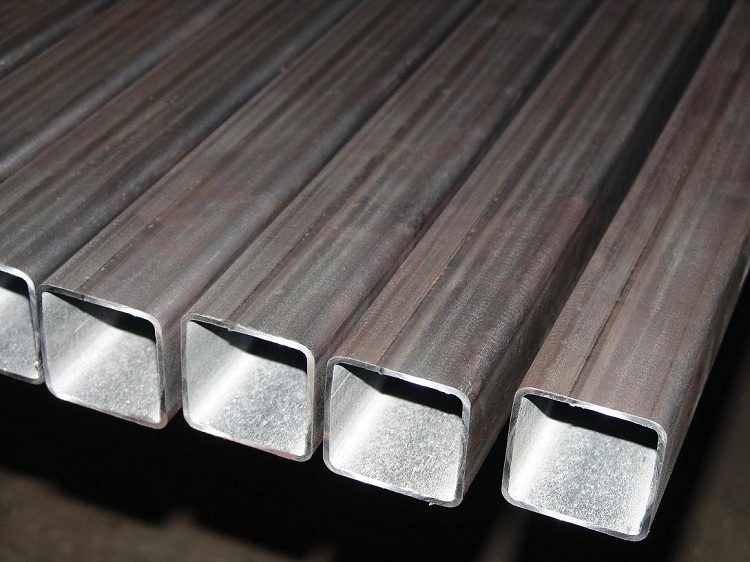
Profiled pipes are produced in several ways, welded products have a clearly visible seam on the surface
Consider what forms of professional pipes can be found today in the construction market:
- square tubes;
- rectangular;
- square with rounded corners;
- rectangular with rounded corners;
- ovoid (oval);
- multifaceted.
The sizes of square profiled pipes are presented in table No. 1.
Table 1
| Dimensions, mm | Wall thickness mm |
| 50X50 | 1,5–2,5 |
| 40X40 | 1,0–2,0 |
| 30x30 | 1,0–2,5 |
| 25x25 | 1,0–2,0 |
| 20X20 | |
| 15X15 |
Square and rectangular products are used, as mentioned above for the installation of various frame structures, and rectangular with 60x40 cross-sectional indicators are used in furniture production. This is due to the fact that such dimensions combine the two most important qualities, namely: lightness and strength.
The dimensions of the rectangular shaped pipes are shown in the table below.
table 2
| Dimensions, mm | Wall thickness mm |
| 80x40 | 1,5–4,0 |
| 80x30 | 1,5–2,5 |
| 70x40 | |
| 70x30 | |
| 60x40 | 1,5–2,5 |
| 60x30 | 1,5–2,0 |
| 60x25 | 1,5–2,5 |
| 60x20 | |
| 50x40 | |
| 50x30 | 1,5–2,0 |
| 50x25 | |
| 50x20 | |
| 40x25 | |
| 40x20 | |
| 30x20 | |
| 25x15 | 1,0–2,0 |
| 20x15 | 1,5–2,0 |
The specific size indicator of a trade union pipe, as a rule, depends on the method of its manufacture. Today, there are 3 methods for the production of profiled metal products. Let's consider them in more detail:
- hot rolling;
- cold rolling;
- welding.
The method by which the section profile is aligned, as well as the product geometric parameters (section indicators, wall thickness and length), depends on the production technology.
Dimensions of hot rolled pipe
First of all, it is necessary to familiarize yourself with the stages of production of hot-rolled profile pipes:
- First, it is necessary to obtain a preliminary pipe with a circular cross section from the billet (the so-called semi-finished product). For this, a blank in the form of a sleeve is passed through special rollers that form the necessary product from it.
- At the second stage, the finished semi-finished product is placed in the forming press, which converts the tube with a circular cross section into the necessary profile part. Thus, a rectangular or square tube is formed.
- Next, the formed profile element is cooled and passed through special rollers, the function of which is to carry out calibration.
- At the end, the resulting pipe is heated to the required temperature and allowed to cool in the open air. It is very important that the part is cooled gradually in a natural way. This procedure allows you to remove the stress that is present in the crystal lattice of the metal.
Thus, it turns out the finished profiled product that meets all the necessary points of GOST. The size range of square products obtained using this method begins with a 60x60 mm pipe, and ends with a part whose edges are 180x180 mm in size.
Helpful information! For rectangular hot-rolled profile tubes obtained by hot rolling, the limit is a part whose cross section is 230x100 mm.
Another important geometric indicator that is affected by hot deformation is the wall thickness. For square and rectangular pipes, this figure varies from 4 to 14 mm.
As for the length of profiled hot-deformed parts, it can be measured and unmeasured. Measured length is the geometric indicator of the product, which is equal to a certain segment, and unmeasured is determined by the size of the segment, as it is within its limits.The minimum length of a square or rectangular part is 4 m, and the maximum is 12.5 m.
Dimensions of Cold Rolled Pipe
As in the case of cold rolling, hot deformation is carried out in 4 stages. Consider these steps in more detail:
- First, a round hole is punched in the washer to make the necessary workpiece.
- Next, the workpiece is rolled to a round pipe.
- At the third stage, the previously prepared semi-finished product with a round cross-sectional shape is produced, passed through the rollers and crimped in the press. After crimping the semi-finished product, a profile product is obtained.
- At the last stage, the profile is passed through calibration rollers.
Cold deformation is the way in which shaped parts with thinner walls are manufactured than in the case of hot deformation. The dimensions of the square shaped tubes in this case will be smaller. The minimum dimensions of the cross section of cold-deformed square pipes are 10x10 mm, and the maximum - 120x120 mm.
The sizes of profiled pipes of this type are prescribed in the current state standard specifications. GOST 8639–82 describes 17 sizes ranging from the minimum cross-sectional profile of the profile pipe to the maximum. And GOST 8645–68 contains 16 sizes located in this range.
In turn, the wall thickness of the pipes obtained by cold deformation of the workpiece varies from 1 to 8 mm. Thus, these shaped products are used when there is a need for thin-walled pipes.
The length of cold-deformed profiled pipes can be, as in the previous case, measured and unmeasured. The minimum indicator of the length of the profile pipe (measured) is 4.5 m, and the maximum reaches 11 m. Unmeasured products have a minimum length of 1.5 m, and the maximum reaches 9 m.
Dimensions of Welded Pipe
As in the two previous cases, the production of profiled steel by welding is carried out in 4 stages. Let's consider them in more detail:
- First, the workpiece is separated from the non-dimensional sheet made of steel. Such a blank is called a strip or a dimensional sheet blank.
- At the second stage, the necessary semi-finished product is made from the strip. This occurs by bending the measuring sheet. The sheet immediately bends to the required sectional shape of the future pipe.
- In the third stage, a sheet bent to the desired shape is welded.
Note! As a rule, welding of the measured sheet is carried out in an inert gas environment, however, there is another option - induction melting and welding of the material.
- At the end, the pipe is run through the calibration rollers.
Products that have a seam practically do not differ in their physical and technical characteristics from seamless hot-rolled and cold-deformed pipes. If the manufacture of a suture profile part was carried out taking into account all production rules, then the rigidity of the finished part will be almost identical to seamless analogues (maximum stiffness losses will be no more than 10%).
The minimum dimensions of a square metal pipe, which was obtained as a result of welding, are 10x10 mm, and the maximum reaches 120x120 mm. In turn, the wall thickness of such a product ranges from 1 to 5 mm. Thus, using welding, it is possible to produce profiled pipes with the smallest indicator of wall thickness. The measured length of the welded profile varies from 5 to 9 m, and unmeasured from 1.5 to 9 m.
